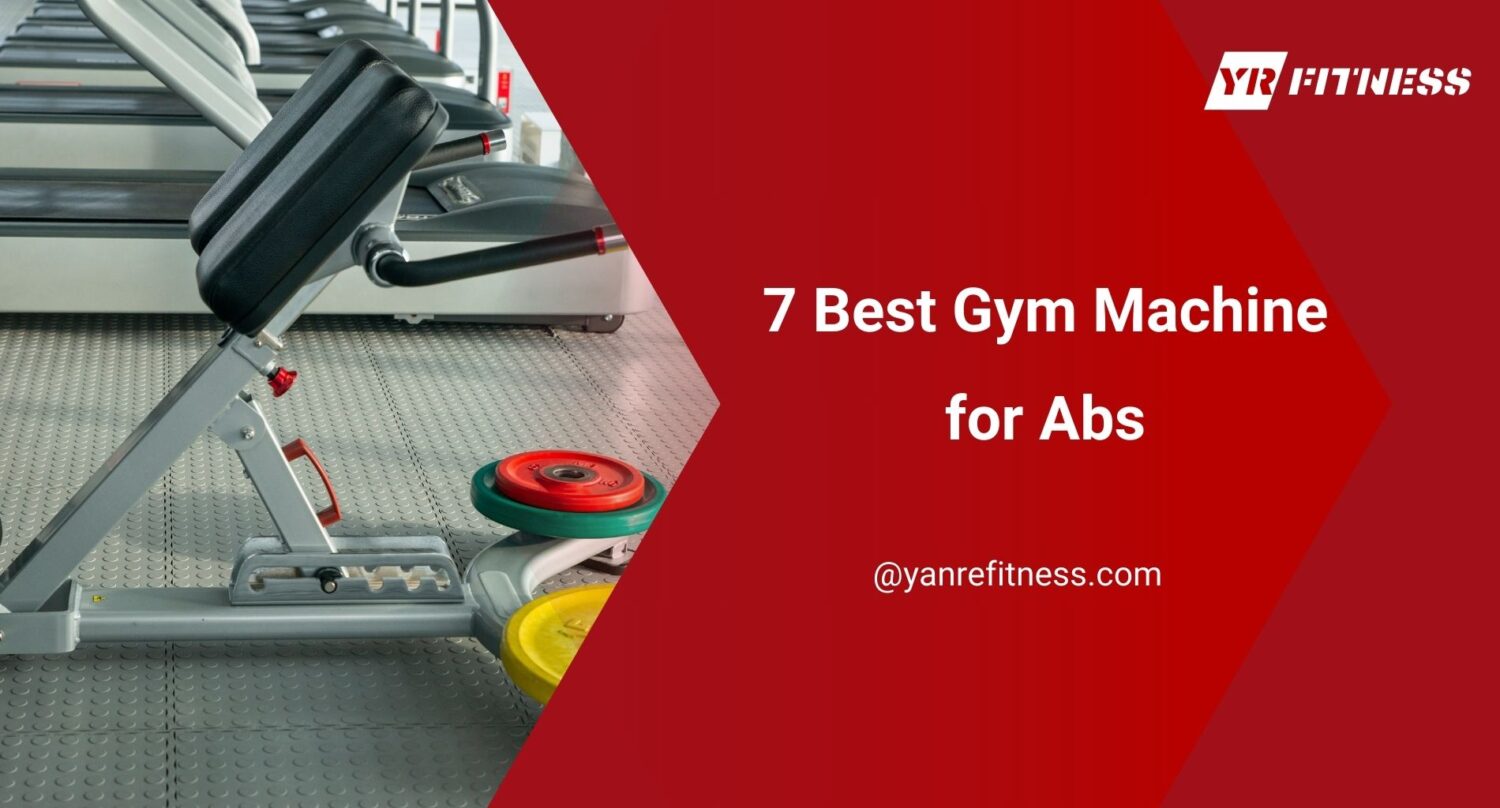Back when I started my gym, I thought all ab machines were the same.
I was wrong.
Some break down fast. Some never get used to it. A few? Total game changers.
After years of trial and error I’ve seen what works in real life. I’ve seen what keeps members engaged and what drives profit.
In this article, I’ll walk you through 7 ab machines that stand out. Machines that aren’t just “cool” they’re commercially smart. You’ll see the pros, the key differences, and what to consider before you buy.
Whether you’re opening a new gym or upgrading your current space, this guide will help you choose machines that work for your members—and your business.
So let’s begin!
Table of Contents
Quick Comparison Chart
Before diving deeper, take a look at this quick overview. It’ll help you spot what makes each machine different at a glance.
Machine | Main Target Area | Best For | Pros | Limitations | Beginner Routine | Advanced Routine |
Seated Ab Crunch Machine | Upper/Mid Abs | Beginners, Seniors | Easy to use, low injury risk | Fixed motion, doesn’t engage stabilizers | Light weight, 2–3 sets of 10–15 reps | Heavy, slow reps, superset with planks |
Vertical Knee Raise (Captain’s Chair) | Lower Abs, Hip Flexors | Intermediate–Advanced, Small Gyms | Bodyweight-based, compact footprint | Needs core control, grip fatigue | Knee tucks, 2 sets | Straight-leg raises, toe-to-bar |
Rotary Torso Machine | Obliques (Side Abs) | General Fitness, Rehab Settings | Safe rotation, isolates obliques | Can be rushed, risk of over-rotation | 45° twists, light weight | Full rotation, superset with side bends |
Cable Ab Crunch Station | Upper Abs | Strength Gyms, Personal Trainers | Adjustable resistance and angles | Requires form coaching | Kneeling cable crunch, 10–12 reps | Heavy load, rotational crunches |
Roman Chair / Hyperextension | Lower Back + Core | Strength Gyms, Posture Correction | Works both abs and back | Risk of overextension if rushed | Bodyweight extensions | Weighted reps, pause at contraction |
Decline Sit-Up Bench | Upper Abs | Budget Gyms, Hotel Fitness Areas | Adjustable incline, low maintenance | Can strain lower back if form breaks down | Low incline crunches | Weighted sit-ups, twist variations |
Hanging Leg Raise Station | Lower Abs | Calisthenics, Athlete Training | Builds deep core strength | Hard for beginners, grip fatigue common | Band-assisted knee raises | V-ups, windshield wipers |
Now let’s break each one down in more detail so you can choose what fits your gym best.
1. Seated Ab Crunch Machine
I used to think ab machines were just for beginners. Then I tried one again after years—and it lit up my upper abs like nothing else.
If you run a gym, don’t overlook this piece. It’s simple, but effective. Clients feel results fast, and that keeps them coming back.
How It Works
You sit down, grip the handles, and crunch forward. The seat supports your back while a weight stack adds resistance to each rep. It’s a controlled forward bend of your upper body. This targets your rectus abdominis—the front muscle that creates the “six-pack” look.
At YR Fitness, our Seated Ab Crunch Machines are built with adjustable resistance and ergonomic padding to help users maintain proper spinal alignment throughout the motion—perfect for safe, effective training in busy commercial gyms.
Pros & Limitations
✅ Pros:
- Easy to use
- Safe for most users
- Good intro to resistance-based core training
❌ Limitations:
- One set movement path
- Doesn’t challenge deep stabilizer muscles
- May feel too basic for advanced lifters
This machine works best as part of a bigger core program.
Beginner and Advanced Ab Routines
Beginner:
- 2 to 3 sets
- 10 to 15 reps
- Use light weight
Advanced:
- Add resistance
- Slow down the lowering phase
- Superset with planks for more challenge
Tips for Using It Effectively
- Sit back fully in the seat. Your lower back should stay pressed against the pad the entire time.
- Hold the handles firmly, but don’t squeeze too hard.
- Move slowly. Avoid jerking or using momentum. This isn’t about speed.
- Exhale as you crunch forward. Inhale as you return.
- Keep your head and eyes facing forward. This helps protect your neck.
- If you feel strain in your lower back, stop. That’s a sign something’s off.
These small adjustments make a big difference. They help your clients feel the movement—and avoid hurting themselves in the process.
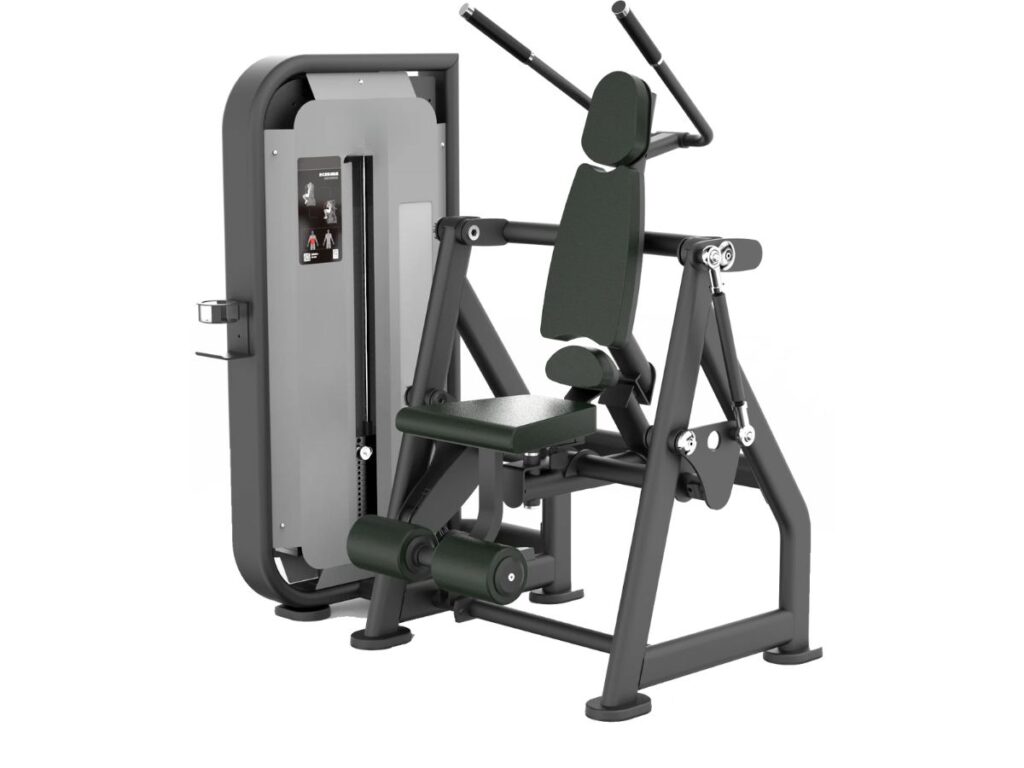
2. Vertical Knee Raise Station (Captain’s Chair)
You know that one piece of equipment that looks easy—until you actually try it?
That’s the Vertical Knee Raise, also called the Captain’s Chair.
I’ve seen this one humble a lot of clients. But when done right, it builds serious lower ab strength. If your gym is short on space but big on results, this machine deserves a spot.
How It Works
You support your body using padded arm rests. Your back stays against the pad. Your legs hang straight down.
Then you lift your knees—or for a bigger challenge, your straight legs. This works your lower abs and hip flexors (the muscles in the front of your hips).
The key is to move slowly and let your core do the work—not your legs.
Pros & Limitations
✅ Pros:
- No weights needed—just bodyweight
- Compact and space-saving
- Strong lower ab activation
❌ Limitations:
- Hard for beginners with weak core or grip
- Easy to use bad form if rushed
- Can strain the back if not controlled
I’ve seen new clients try to swing through reps. That’s when I stop them. This station works best when every rep is controlled and focused.
Beginner and Advanced Ab Routines
Beginner Routine:
- 2 sets of 8 to 10 reps
- Start with bent-knee raises (knee tucks)
- Move slowly and focus on your breathing
Advanced Routine:
- 3 to 4 sets
- Straight-leg raises or toe-to-bar
- Lower your legs slowly for extra tension
- Superset with planks for full-core activation
Tips for Using It Effectively
- Keep your core muscles tight throughout the set
- Press your back firmly into the pad
- Don’t swing your legs—use muscle, not momentum
- Exhale as you raise your knees or legs
- Inhale and lower slowly for more control
This station doesn’t just look cool—it works when you use it right. Remind your clients: slow movement builds strength that shows.
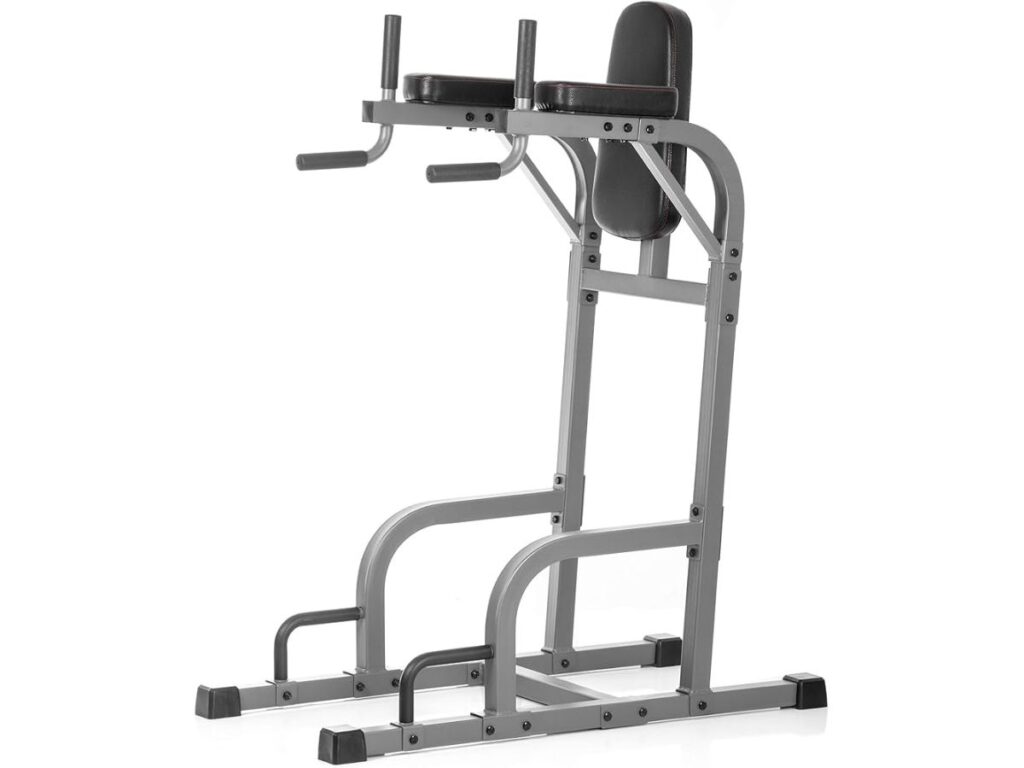
3. Rotary Torso Machine
Ever feel like your core workouts are missing something? That was me—until I tried this. The twist, the tension, the deep burn in my sides… It felt completely different from crunches.
If you’re looking for a machine that targets the side abs—your obliques—this one’s worth a spot in your gym.
How It Works
You sit down, place your arms or hands across the pads, and set your hips into position.
The movement is a controlled rotation of your upper body side to side, while your lower half stays locked in place. This action works your internal and external obliques—the muscles on the sides of your torso that help you twist, turn, and stabilize.
The resistance comes from a weight stack, letting you increase or decrease the challenge based on strength level.
Pros & Limitations
✅ Pros:
- Great for isolating side core muscles
- Low-impact, controlled range of motion
- Good for general fitness and sports training
❌ Limitations:
- Can be ineffective if done too fast
- Over-rotating may strain the lower back
- Not ideal for people with spine or disc issues
I’ve watched people swing through this exercise and miss the benefit entirely. But when it’s slow and focused? You can almost feel each rep shaping your waistline.
Beginner and Advanced Ab Workout Routines
Beginner Routine:
- Use light resistance
- Rotate slowly to about 45° each side
- 2 to 3 sets of 10 to 12 reps
Advanced Routine:
- Use full-range rotation
- 3 to 4 sets of 12 to 15 reps
- Superset with planks or dumbbell side bends for variety
This machine pairs well with other core moves, especially when building rotation strength.
Tips for Using It Effectively
- Keep your hips and legs locked in place
- Rotate only with your torso, not your whole body
- Move slowly and with control—avoid swinging
- Focus on squeezing your obliques as you twist
- Don’t go past your comfortable range
This machine might not turn heads at first, but it’s a quiet powerhouse for oblique training. When used with focus, it delivers the kind of core strength your clients will feel—and see.
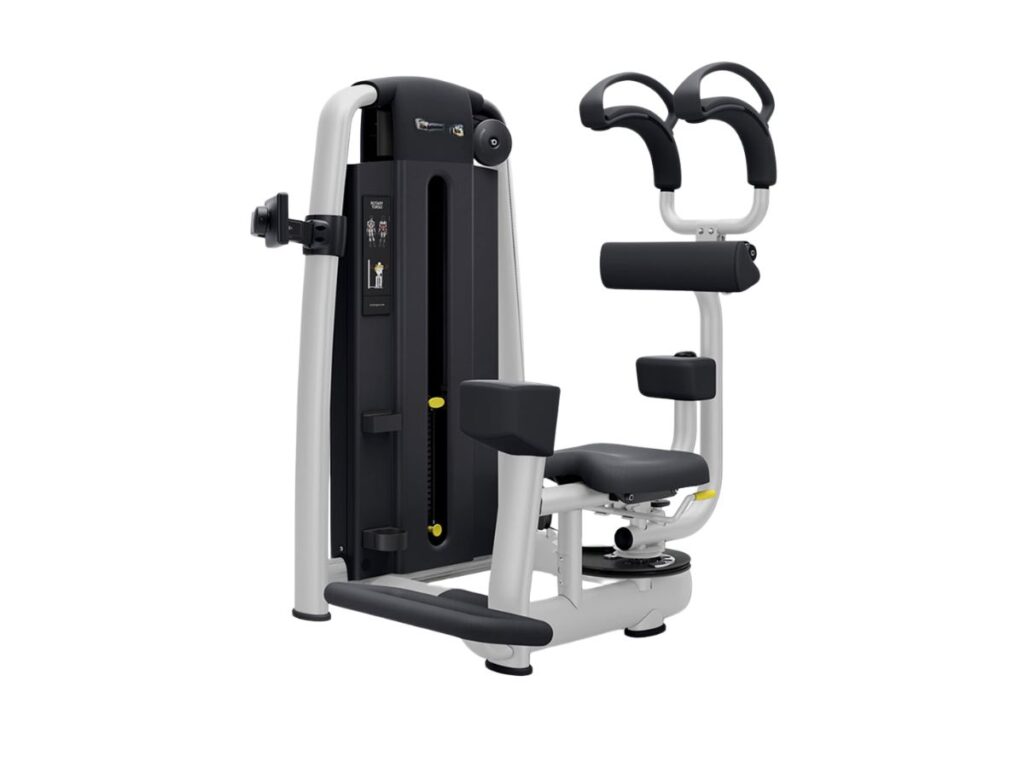
4. Cable Ab Crunch Station
I still remember watching a trainer cue a new member on cable ab crunch for the first time. The guy was yanking with his arms and barely moving his core. The trainer just smiled and said, “Try curling your spine like a wave.”
That one cue changed everything. And it stuck with me.
If you’re adding a machine for serious ab training, this one gives you options most others don’t.
How It Works
The cable ab crunch station uses a weight stack connected to a cable. You perform a crunching motion using the cable as resistance.
There are 2 common setups:
- Kneeling, where you hold the rope above your head
- Standing, often with a high pulley attachment
Either way, the motion should come from your spine curling downward—not from your arms pulling down.
This move targets your rectus abdominis (the six-pack muscle) and lets you adjust the weight to fit any strength level.
Pros & Limitations
✅ Pros:
- Custom resistance and angle options
- Strong tension throughout the full range of motion
- Can be used kneeling, standing, or even sideways for rotation
❌ Limitations:
- Form is easy to mess up
- Some clients may rely on arms instead of abs
- Takes coaching to get right
In my experience, once someone learns how to “crunch from the ribs,” they finally feel their abs doing the work—not just their shoulders.
Beginner and Advanced Ab Workout Routines
Beginner Routine:
- Start with kneeling cable crunches
- 2 to 3 sets
- 10 to 12 reps
- Light weight and controlled form
Advanced Routine:
- Add more resistance
- Slow down the eccentric (lowering) phase
- Try standing or rotational cable crunches
- Superset with hanging knee raises for variety
For a balanced workout, consider pairing core movements with upper body training using bench press machines, especially during split routines.
Tips for Using It Effectively
- Focus on curling your spine, not yanking the weight
- Keep your elbows close to your body
- Brace your abs before each rep
- Breathe out as you crunch down
- Keep tension on your core—not your arms
Used right, this machine builds real strength and control. It’s a favorite of trainers for a reason—it teaches people how to move from the core, not just through it.
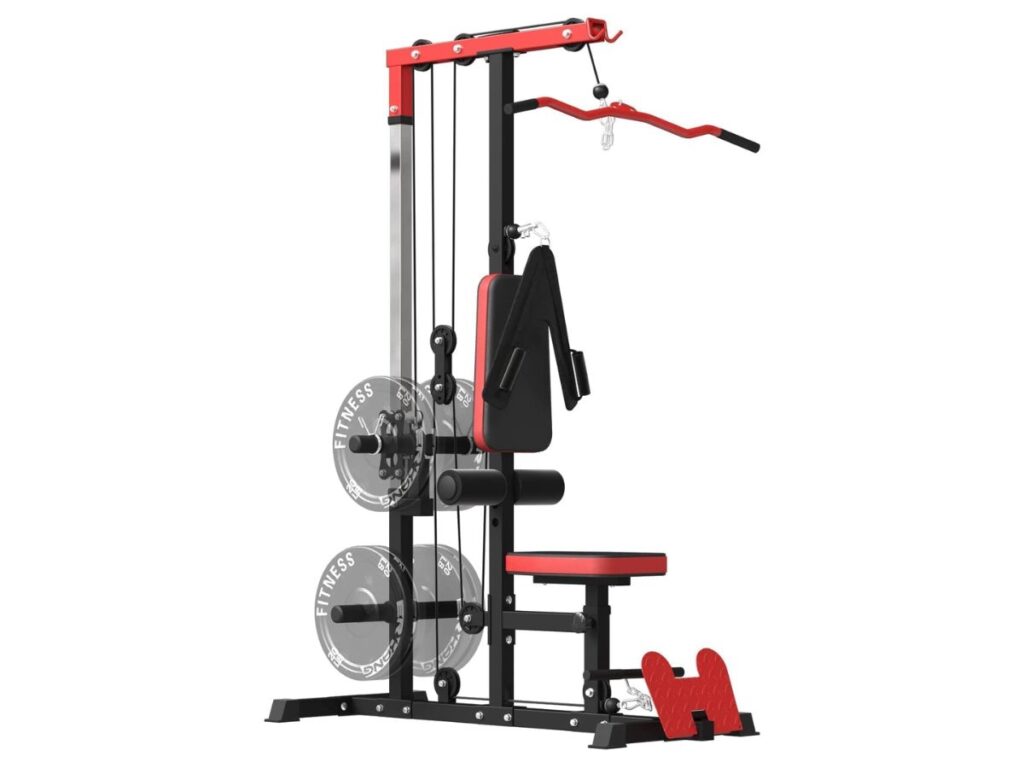
5. Roman Chair / Hyperextension Bench
One of the first gyms I worked with had a dusty Roman chair tucked in the corner. Nobody touched it.
Most members thought it was just for back workouts—or worse, didn’t know what it was for at all.
But after a trainer showed clients how to use it for both core and back, that same machine became the most used in the room.
If you’re building a results-driven space, this one deserves attention.
How It Works
The Roman chair or hyperextension bench uses bodyweight resistance. You position yourself face down, hips supported on the pad, heels locked behind footrests.
From there, you perform controlled spine extension and flexion. This movement targets your lower back, glutes, and core—especially when done with tight control.
And yes, when used right, it absolutely hits the abs.
Pros & Limitations
✅ Pros:
- Trains both posterior chain (back side) and core
- Low equipment cost
- Excellent for improving posture and spinal strength
❌ Limitations:
- Easy to overextend the spine if not coached
- Some clients may feel unsure about body position
- Doesn’t isolate abs unless movement is adjusted carefully
Beginner and Advanced Ab Workout Routines
Beginner Routine:
- Bodyweight only
- 2 to 3 sets of 10 reps
- Focus on lifting just to a neutral spine—not beyond
Advanced Routine:
- Hold a weight plate at your chest
- Pause for 2 seconds at the top
- Try reverse crunches with a decline setup for more core work
This machine works for both strength-focused and rehab-style programming.
Tips for Using It Effectively
- Keep your spine in a neutral position—don’t over-arch
- Move slowly and with control
- Engage your core throughout each rep
- Don’t lift with your neck or throw your chest upward
- Breathe out as you lift, breathe in as you return
It’s a humble machine—but powerful when taught right. The Roman chair isn’t just for back day. It’s for anyone who wants better core control and stronger movement overall.
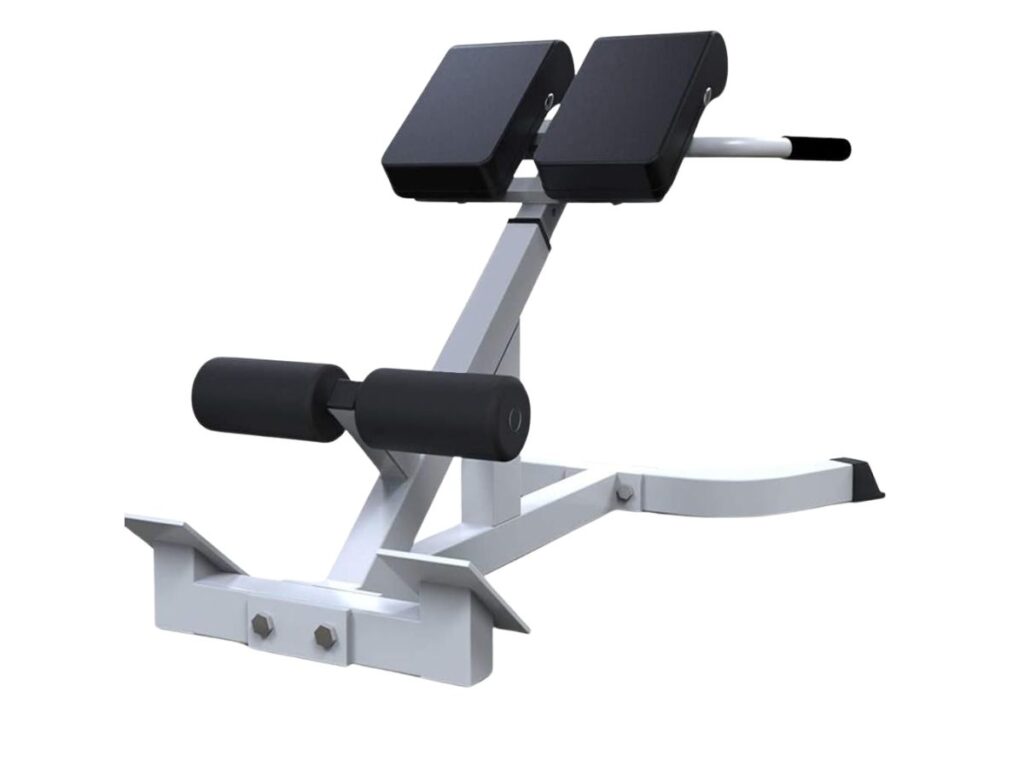
6. Decline Sit-Up Bench (Adjustable Ab Bench)
You’ve probably seen this one before. It’s a classic.
The decline bench looks simple, but when used right—it burns deep.
I’ve had clients start with just bodyweight crunches and feel sore for days. If you’re adding a cost-effective ab machine to your lineup, this one’s a solid pick.
How It Works
You lie on your back with your feet secured and your upper body angled downward. This position increases resistance, making even basic sit-ups or crunches more intense.
The adjustable incline lets you scale the difficulty. A steeper decline means more work for your abs. A flatter angle makes it easier.
It mainly targets the rectus abdominis—your front core muscles—but also activates your hip flexors and obliques depending on how you move.
Pros & Limitations
✅ Pros:
- Adjustable for all fitness levels
- Budget-friendly and low maintenance
- Fits well in hotel gyms, home setups, or general strength areas
❌ Limitations:
- Can place pressure on the lower back if done too fast or with poor form
- Some users may overuse their hip flexors instead of their abs
- Harder to scale once users outgrow bodyweight sit-ups
I’ve seen people swing through reps just to say they finished. But when clients slow down and use control, they feel the difference right away.
Beginner and Advanced Ab Workout Routines
Beginner Routine:
- Start at a low incline
- 2 sets of crunches, 10 to 12 reps
- Keep your hands crossed over your chest
Advanced Routine:
- Use a weight plate held at the chest or overhead
- Try twisting sit-ups to target obliques
- 3 sets of 12 to 15 reps with full range of motion
This bench allows variety for different skill levels—all in one station.
Tips for Using It Effectively
- Brace your core before each rep
- Avoid pulling on your neck—hands can stay across the chest or lightly behind your head
- Don’t swing—use slow, steady movement
- Exhale on the way up, inhale on the way down
If your goal is a simple, effective machine that builds real ab strength—this bench gets the job done. Just remind your clients: form beats speed every time.
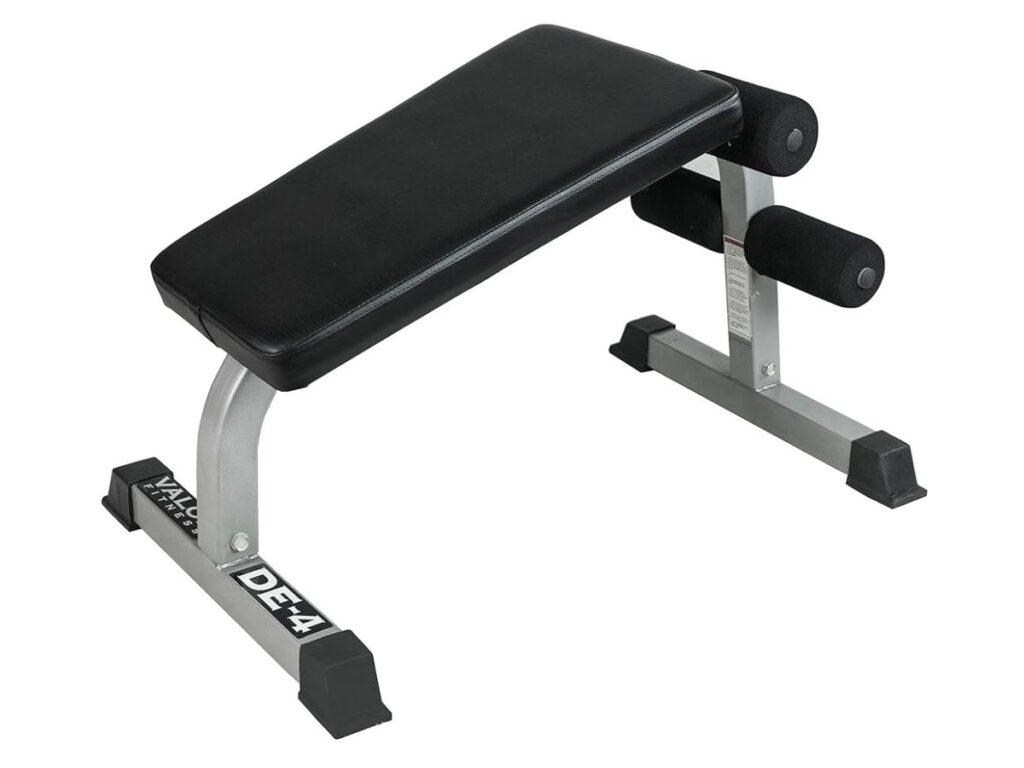
7. Hanging Leg Raise Station
The first time I tried this, I thought, “How hard can it be?” Two reps in, my abs were shaking and my grip was giving out.
If you’ve ever watched someone float their legs up like it’s nothing—now you know how much control it really takes. This station hits your core in a way few other moves can.
How It Works
You hang from a pull-up bar with your arms extended, then lift your knees or legs toward your chest. The goal is to move from your core—not just swing your legs.
This exercise focuses on your lower abs and also strengthens your hip flexors, grip, and shoulders.
At YR Fitness, our Hanging Leg Raise Stations are built with durable grips and reinforced frames to help users stay stable and focused during each rep—ideal for high-performance training environments.
Pros & Limitations
✅ Pros:
- Builds powerful lower ab strength
- Great for advanced users and athletes
- Also improves grip and upper-body control
❌ Limitations:
- Not beginner-friendly without modifications
- Grip strength often gives out before the abs do
- Easy to lose form and start swinging
Beginner and Advanced Ab Workout Routines
Beginner Routine:
- Use a resistance band for support
- Perform knee raises
- 2 sets of 6 to 8 controlled reps
Advanced Routine:
- Straight-leg raises, V-ups, or windshield wipers
- 3 to 4 sets
- Focus on slow movement and full range of motion
These progressions are perfect for calisthenics programs or athletic training facilities.
Tips for Using It Effectively
- Keep your core tight and body still
- Avoid swinging—control both directions
- Exhale as you lift, inhale as you lower
- Use a slight bend in your knees if needed
- If grip is a problem, try lifting straps for support
This movement is tough—but worth it. When done right, it’s one of the best ways to build real, deep core strength your clients will feel long after the set ends.
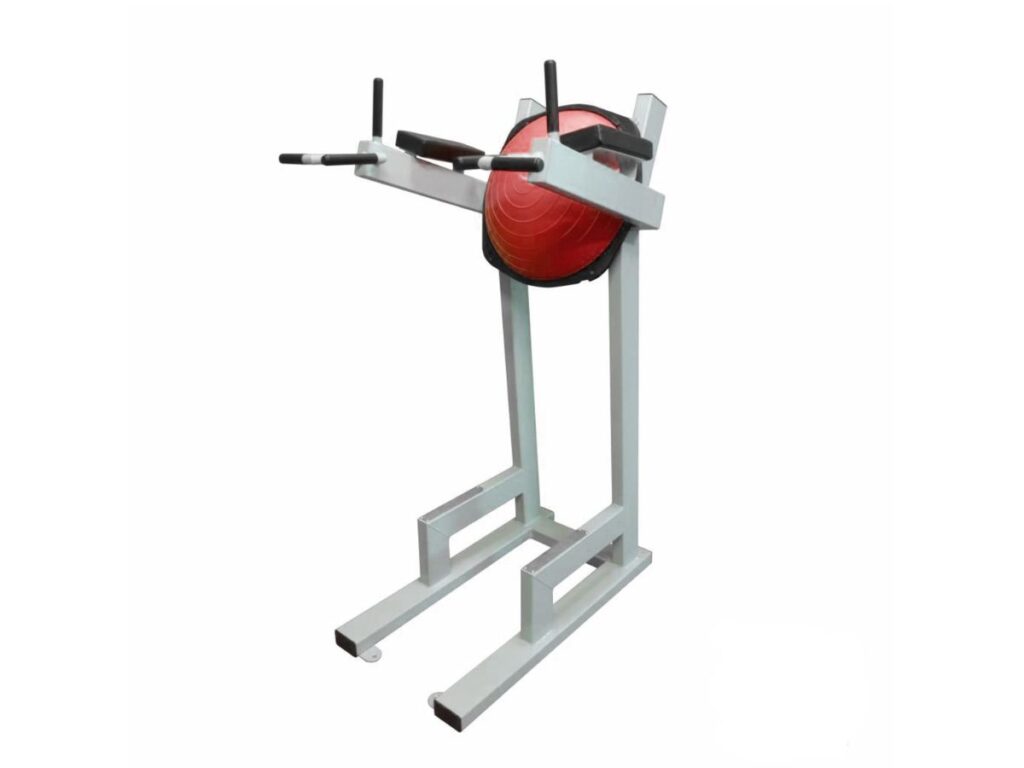
Conclusion
You’ve seen what each machine can do.
You know which muscles they target, who they’re for, and how to get the best out of them.
But knowing isn’t enough.
It’s time to take action. Because stronger cores mean stronger clients—and stronger gyms.
So what’s stopping you?
What’s holding you back from building a gym people won’t want to leave?
Contact us today and we’ll help you choose the right machines for you business.
Related articles:
